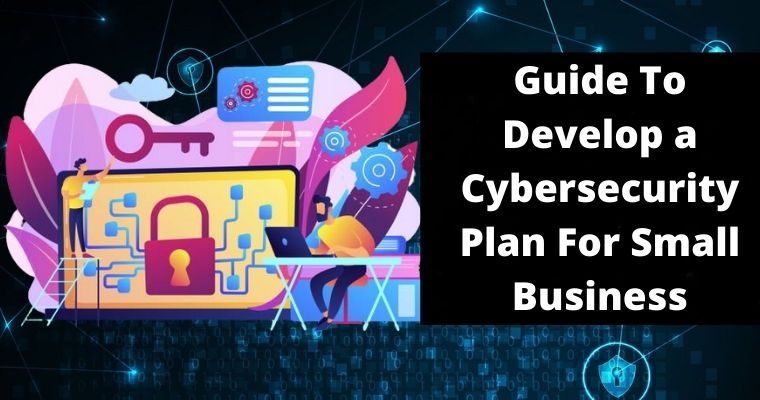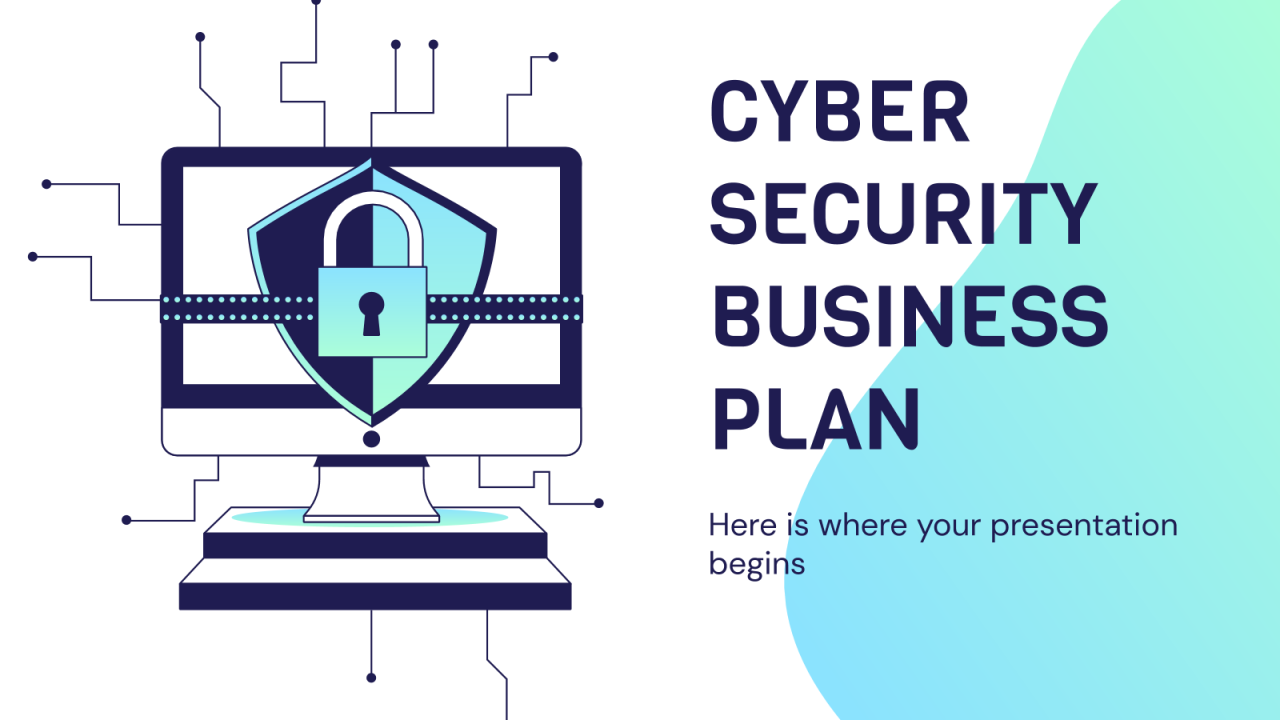
5 Things Your Small Business Cybersecurity Plan Must Cover
5 Things Your Small Business Cybersecurity Plan Must Cover: In today’s digital world, even small businesses are prime targets for cyberattacks. A robust cybersecurity plan isn’t just a good idea; it’s a necessity for survival. Ignoring this crucial aspect can lead to devastating financial losses, reputational damage, and legal repercussions. This post dives into the five essential elements every small business needs to include in their cybersecurity strategy, helping you protect your data, your reputation, and your bottom line.
We’ll explore critical areas like data protection and privacy, ensuring your sensitive information remains secure. We’ll also delve into access control and authentication, safeguarding your systems from unauthorized access. Network security, device security, and incident response planning are also crucial components, and we’ll unpack each one to give you a clear understanding of what’s involved. By the end of this post, you’ll have a solid foundation for building a comprehensive cybersecurity plan that fits your business needs.
Data Protection and Privacy: 5 Things Your Small Business Cybersecurity Plan Must Cover
Protecting your business data and respecting customer privacy is paramount. A robust cybersecurity plan must address these issues comprehensively, mitigating risks and ensuring compliance with relevant regulations like GDPR and CCPA. Failure to do so can lead to significant financial losses, reputational damage, and legal repercussions.
Data Encryption for Sensitive Business Information
Data encryption is the process of converting readable data into an unreadable format, called ciphertext. Only authorized individuals with the correct decryption key can access the original data. For sensitive business information such as financial records, customer Personally Identifiable Information (PII), and intellectual property, encryption is crucial. Strong encryption methods, like AES-256, should be implemented for both data at rest (stored on servers or hard drives) and data in transit (transmitted over networks).
Regular key rotation and secure key management practices are also essential to maintain the effectiveness of encryption.
Employee Data Protection Training
Regular and comprehensive employee training is vital for maintaining data security. This training should cover topics such as phishing awareness, password security best practices, recognizing and reporting suspicious activity, and understanding the company’s data protection policies. Interactive modules, simulations, and regular quizzes can enhance employee engagement and knowledge retention. Furthermore, training should be tailored to the specific roles and responsibilities of employees, focusing on the types of data they handle and the potential risks associated with their work.
For example, sales staff may need training on protecting customer PII, while IT staff requires more in-depth training on system security.
Data Breach Response Plan
A well-defined data breach response plan is critical for minimizing the impact of a security incident. This plan should Artikel steps to take in the event of a data breach, including identifying the breach, containing its spread, investigating its cause, notifying affected individuals and authorities (as required by law), and recovering from the incident. The plan should also specify roles and responsibilities for each team member involved in the response process.
Regular testing and updates to the plan are crucial to ensure its effectiveness. For instance, a simulated breach scenario could be conducted annually to evaluate the team’s preparedness and identify areas for improvement.
Handling Customer Data Requests
Businesses must have a clear procedure for handling customer data requests, especially concerning data access, correction, deletion, and portability rights (as stipulated by regulations like GDPR). This procedure should Artikel the steps involved in verifying the customer’s identity, processing the request, and providing a timely response. The procedure should also detail how to handle requests that are incomplete, inaccurate, or otherwise problematic.
For example, the process should clearly state the timeframe for responding to requests and the channels through which customers can submit their requests. A designated team should be responsible for managing these requests and ensuring compliance with all applicable regulations.
Data Classification and Corresponding Security Measures
| Data Classification Level | Description | Examples | Security Measures |
|---|---|---|---|
| Confidential | Data whose unauthorized disclosure could cause significant harm to the organization. | Financial records, strategic plans, intellectual property | Strong encryption, access control lists, regular audits |
| Internal | Data used internally within the organization but not considered confidential. | Employee payroll information, internal communications | Network access controls, password protection |
| Public | Data that can be publicly disclosed without harm. | Marketing materials, website content | Standard web security measures |
| Restricted | Data with limited access, requiring specific authorization. | Customer PII, sensitive health information (if applicable) | Strong encryption, multi-factor authentication, access control lists, data loss prevention (DLP) tools |
Access Control and Authentication

Protecting your small business data requires a robust access control and authentication system. This goes beyond simply having a password; it’s about carefully managing who can access what information and ensuring only authorized individuals can do so. A well-designed system minimizes the risk of data breaches and maintains the confidentiality, integrity, and availability of your sensitive information.
Strong Password Policies
Strong passwords are the first line of defense against unauthorized access. A good password policy should mandate passwords that are long (at least 12 characters), complex (including uppercase and lowercase letters, numbers, and symbols), and unique to each account. Regular password changes, perhaps every 90 days, are also crucial. Consider using a password manager to help employees generate and securely store strong, unique passwords for all their accounts.
Enforcing these policies through company-wide guidelines and potentially automated password strength checkers is vital. Failing to enforce these measures can leave your business vulnerable to brute-force attacks or credential stuffing.
Multi-Factor Authentication (MFA) Benefits and Drawbacks
Multi-factor authentication (MFA) adds an extra layer of security by requiring users to verify their identity through multiple factors, such as a password and a one-time code sent to their phone or email. The benefits are clear: significantly reduced risk of unauthorized access, even if passwords are compromised. However, MFA can introduce some drawbacks. It might add a small amount of inconvenience for users, and there’s a slight chance of lockout if users lose access to their secondary authentication method.
Despite these minor inconveniences, the increased security MFA provides far outweighs the potential downsides for most small businesses.
Role-Based Access Control (RBAC) Implementation
Role-based access control (RBAC) assigns permissions based on an employee’s role within the organization. For example, an accountant might have access to financial data, while a marketing employee would not. Implementing RBAC involves defining roles, assigning permissions to those roles, and then assigning employees to specific roles. This granular control prevents employees from accessing data they don’t need, limiting the potential damage from insider threats or accidental data exposure.
This approach significantly streamlines the management of user permissions, especially in growing businesses.
Potential Vulnerabilities in Access Control Systems
Despite best efforts, access control systems can have vulnerabilities. Weak passwords, phishing attacks targeting employees’ credentials, and poorly configured access controls are common issues. Insufficient employee training on security best practices can also leave your business vulnerable. Regular security audits and penetration testing can help identify and address these weaknesses before they are exploited by malicious actors.
Keeping software updated and patched is also crucial to mitigate known vulnerabilities.
Access Control Measures for Different Employee Roles
The appropriate access control measures vary depending on an employee’s role and responsibilities. Consider these examples:
- Executive Team: Access to all systems and data, but with strong MFA requirements and regular security awareness training.
- Finance Department: Access to financial systems and data, with strong password policies and MFA. Regular audits of access privileges are essential.
- Sales Team: Access to customer relationship management (CRM) systems and sales data, with appropriate restrictions based on individual responsibilities. MFA should be considered.
- IT Department: Broader access to systems and data, requiring robust MFA and stringent security protocols, with careful monitoring of their activities.
- General Employees: Limited access to only the systems and data necessary for their job functions. Strong password policies and regular security training are essential.
Network Security
Network security is the bedrock of any small business’s online presence. A robust network security plan protects your valuable data, maintains customer trust, and prevents costly downtime. Ignoring this aspect leaves your business vulnerable to a range of threats, from data breaches to complete system shutdowns. This section will explore key components of a strong network security strategy for small businesses.
Firewall Configurations for Small Businesses
Firewalls act as the first line of defense, inspecting incoming and outgoing network traffic and blocking malicious activity. For small businesses, a hardware firewall, often integrated into a router, is usually sufficient. This device should be configured to allow only necessary traffic based on port numbers and IP addresses. For example, you might allow inbound traffic on port 80 (HTTP) for website access and port 443 (HTTPS) for secure website traffic, while blocking all other inbound traffic unless specifically required by an application.
Regularly updating the firewall’s firmware is crucial to patching security vulnerabilities. Consider employing more sophisticated firewall features like application control, which allows for granular control over specific applications accessing the network. Additionally, implementing a robust firewall policy that defines which traffic is allowed and blocked is essential. This policy should be regularly reviewed and updated to adapt to changing business needs and emerging threats.
Importance of Regular Network Security Audits, 5 things your small business cybersecurity plan must cover
Regular network security audits are vital for identifying vulnerabilities before they can be exploited. These audits involve a systematic examination of your network infrastructure, including devices, software, and configurations. A security audit might involve vulnerability scanning to identify known weaknesses, penetration testing to simulate real-world attacks, and a review of security policies and procedures. By proactively identifying and addressing vulnerabilities, you significantly reduce the risk of a successful attack.
Audits also provide a baseline for measuring the effectiveness of your security measures over time and highlight areas needing improvement. Consider scheduling audits at least annually, or more frequently if significant changes occur to your network infrastructure or business operations. For example, after implementing new software or hardware, a post-implementation audit is crucial.
Identifying and Mitigating Common Network Threats
Small businesses are frequent targets for common network threats such as malware, phishing attacks, and denial-of-service (DoS) attacks. Malware can infect systems through malicious links or downloads, crippling operations and potentially stealing data. Phishing attacks attempt to trick employees into revealing sensitive information, like login credentials. DoS attacks flood a network with traffic, rendering it inaccessible. Mitigation strategies involve employee training on identifying and avoiding phishing attempts, using robust antivirus software, implementing strong password policies, and deploying intrusion detection systems (IDS) to monitor network traffic for suspicious activity.
Regularly backing up your data to an offline location is also crucial to recover from a ransomware attack. Furthermore, promptly patching software vulnerabilities is essential in preventing exploitation by malicious actors.
Comparison of Network Security Solutions
Several network security solutions can enhance your small business’s protection. Virtual Private Networks (VPNs) encrypt network traffic, protecting data transmitted over public Wi-Fi networks. Intrusion Detection Systems (IDS) monitor network traffic for suspicious activity, alerting administrators to potential threats. Intrusion Prevention Systems (IPS) go a step further by actively blocking malicious traffic. Firewalls, as previously discussed, form the foundation of network security.
The best solution depends on your specific needs and budget. A small business might start with a basic firewall and antivirus software, gradually adding more sophisticated solutions like a VPN or IDS as needed. The choice should be based on a risk assessment identifying the most significant threats to the business.
Secure Network Architecture
Imagine a network diagram. At the outermost layer is a firewall, acting as a gatekeeper, controlling all incoming and outgoing traffic. Behind the firewall is a demilitarized zone (DMZ), a buffer zone hosting publicly accessible servers like web servers. These servers are separated from the internal network, limiting the impact of a compromise. The internal network houses the business’s critical systems and data, protected by strong access controls and authentication mechanisms.
All devices on the internal network are regularly updated with security patches. Employees connect to the internal network through secure connections, perhaps using a VPN for remote access. Data is regularly backed up to an offsite location. This layered approach, with multiple security measures in place, minimizes the impact of a successful attack by creating multiple points of defense.
Regular security audits and employee training reinforce this architecture’s effectiveness.
Device Security
Protecting your company’s devices is paramount to maintaining a strong cybersecurity posture. Neglecting device security leaves your business vulnerable to data breaches, malware infections, and significant financial losses. A comprehensive device security plan should encompass both company-owned and employee-owned devices used for work purposes.Company-owned laptops and smartphones present a significant attack surface if not properly secured. Implementing robust security measures minimizes the risk of unauthorized access and data compromise.
This includes regularly updating operating systems and software, enabling strong password policies (including multi-factor authentication where possible), and utilizing encryption to protect sensitive data both in transit and at rest.
Securing Company-Owned Devices
Implementing strong passwords and multi-factor authentication is crucial. All company-owned devices should be encrypted using full-disk encryption. Regular software updates, including operating system patches and security updates for applications, are essential to mitigate known vulnerabilities. Additionally, a clear policy should exist outlining acceptable use, data handling, and reporting procedures for suspected security incidents. For example, a policy might mandate that employees report any suspicious emails or software immediately to the IT department.
So, your small business cybersecurity plan needs to cover employee training, strong passwords, regular software updates, data backups, and incident response procedures. Building secure apps is crucial, and that’s where understanding the latest in app development comes in, like exploring what’s possible with domino app dev the low code and pro code future , which can impact how you design secure systems.
Ultimately, a robust cybersecurity plan is essential for protecting your business data, no matter how you build your applications.
Risks of Using Personal Devices for Work
Using personal devices for work (BYOD – Bring Your Own Device) significantly increases security risks. Personal devices often lack the robust security controls found on company-owned devices, making them more susceptible to malware and unauthorized access. Furthermore, enforcing consistent security policies across a diverse range of personal devices is challenging. The lack of centralized management and the potential for conflicting security software can create significant vulnerabilities.
For example, a personal device might have outdated antivirus software or a compromised operating system, leaving company data vulnerable.
Mobile Device Management (MDM) Solutions
Mobile Device Management (MDM) solutions provide centralized control and management of mobile devices, both company-owned and employee-owned. MDM software allows for remote device wiping, application management, security policy enforcement, and tracking of lost or stolen devices. Implementing an MDM solution offers enhanced security and control over mobile devices accessing company resources, providing a crucial layer of protection against data breaches and malware infections.
For instance, an MDM solution could remotely lock a lost phone, preventing unauthorized access to company data.
Endpoint Device Vulnerabilities
Endpoint devices, such as laptops, smartphones, and tablets, represent a significant entry point for cyberattacks. Outdated software, weak passwords, phishing attacks, and unpatched vulnerabilities all pose substantial risks. Malicious software can easily infect endpoint devices, potentially leading to data theft, system compromise, and ransomware attacks. For example, a simple phishing email containing a malicious attachment could compromise an entire system.
Regular vulnerability scans and penetration testing can identify and address these weaknesses proactively.
Securing Remote Access to Company Networks
Securing remote access to company networks is crucial in today’s increasingly distributed workforce. Employing strong authentication methods, such as multi-factor authentication, is essential. Virtual Private Networks (VPNs) should be mandatory for all remote access, encrypting data transmitted between the remote device and the company network. Regular security audits and monitoring of remote access activity can help detect and respond to potential threats promptly.
For example, unusual login attempts from unusual geographical locations should trigger an immediate investigation.
Incident Response Planning

A robust incident response plan is the cornerstone of a comprehensive cybersecurity strategy for any small business. It’s not a matter of
- if* a security incident will occur, but
- when*. Having a well-defined plan in place minimizes damage, speeds recovery, and protects your business’s reputation. This plan should be a living document, regularly reviewed and updated to reflect changes in your technology and business operations.
Creating an Incident Response Plan: Steps Involved
Developing an effective incident response plan requires a structured approach. First, you need to identify potential threats and vulnerabilities specific to your business. This involves assessing your systems, networks, and data to pinpoint weaknesses. Next, establish clear roles and responsibilities. Who is responsible for identifying an incident?
Who handles communication? Who leads the recovery effort? Defining these roles upfront prevents confusion during a crisis. Finally, you should simulate various scenarios through tabletop exercises or other drills to test the plan’s effectiveness and identify areas for improvement. This iterative process ensures your plan is ready for real-world situations.
Examples of Common Cybersecurity Incidents and Their Impact
Several common cybersecurity incidents can severely impact small businesses. A ransomware attack, for example, can encrypt critical data, halting operations and demanding a ransom for its release. This can lead to financial losses, reputational damage, and legal liabilities. Phishing attacks, where malicious emails trick employees into revealing sensitive information, can result in data breaches, identity theft, and financial fraud.
Denial-of-service (DoS) attacks, which flood a network with traffic to make it unavailable, can disrupt operations and damage customer relationships. Each of these incidents has the potential to cause significant harm, emphasizing the need for a proactive incident response plan.
The Incident Response Lifecycle
The incident response lifecycle typically follows a structured process. It begins with Preparation, which involves developing the plan itself, including defining roles, procedures, and communication protocols. Identification is the next phase, where the security incident is detected. This might involve monitoring systems, receiving alerts, or noticing unusual activity. Containment focuses on isolating the affected systems to prevent further damage.
This might involve disconnecting infected computers from the network or shutting down services. Eradication involves removing the threat and restoring systems to a secure state. This might involve deleting malware, patching vulnerabilities, and reinstalling software. Recovery involves restoring data and systems to their normal operational state. Finally, Post-Incident Activity involves analyzing the incident to identify weaknesses, improve security measures, and update the incident response plan.
Communication Plan for Notifying Stakeholders During a Security Incident
A clear communication plan is crucial during a security incident. This plan should Artikel who needs to be notified (employees, customers, partners, regulators), what information needs to be shared (nature of the incident, potential impact, steps being taken), and how communication will be delivered (email, phone, website). It’s important to have pre-written templates for various scenarios to ensure consistent and timely messaging.
Regular communication updates keep stakeholders informed and maintain trust. This is especially important for regulatory compliance, such as GDPR or CCPA, which may require notification of data breaches to affected individuals and authorities within a specific timeframe.
Checklist of Actions During and After a Security Breach
Before a breach, ensure you have backups of critical data stored offline. During a breach, prioritize containing the incident to prevent further spread, then identify the affected systems and data. Document all actions taken. After the breach, conduct a thorough investigation to determine the root cause, implement corrective actions to prevent future incidents, and review and update your incident response plan.
- Before a Breach: Regularly back up data to an offline location. Conduct security awareness training for employees.
- During a Breach: Isolate affected systems. Document all actions taken. Notify relevant stakeholders according to your communication plan.
- After a Breach: Conduct a thorough investigation. Implement corrective actions. Review and update your incident response plan. Consider engaging forensic experts if necessary.
Final Summary

Building a strong cybersecurity plan for your small business is an ongoing process, not a one-time fix. Regularly reviewing and updating your plan, keeping up with the latest threats, and providing ongoing training for your employees are all key to maintaining a strong security posture. Remember, proactive measures are far more effective and cost-efficient than reacting to a breach.
By prioritizing cybersecurity, you’re investing in the long-term health and success of your business. Don’t wait until it’s too late; start building your plan today!
Frequently Asked Questions
What is the difference between data encryption and data masking?
Data encryption transforms data into an unreadable format, requiring a key to decipher it. Data masking replaces sensitive data with non-sensitive substitutes while preserving the data’s structure.
How often should I update my cybersecurity plan?
At least annually, and more frequently if there are significant changes in your business operations or technology.
What is the best type of firewall for a small business?
It depends on your needs and budget. A cloud-based firewall is often a good option for its ease of management and scalability.
What should I do if I suspect a security breach?
Immediately follow your incident response plan. If you don’t have one, isolate affected systems, contact IT professionals, and consider legal counsel.





